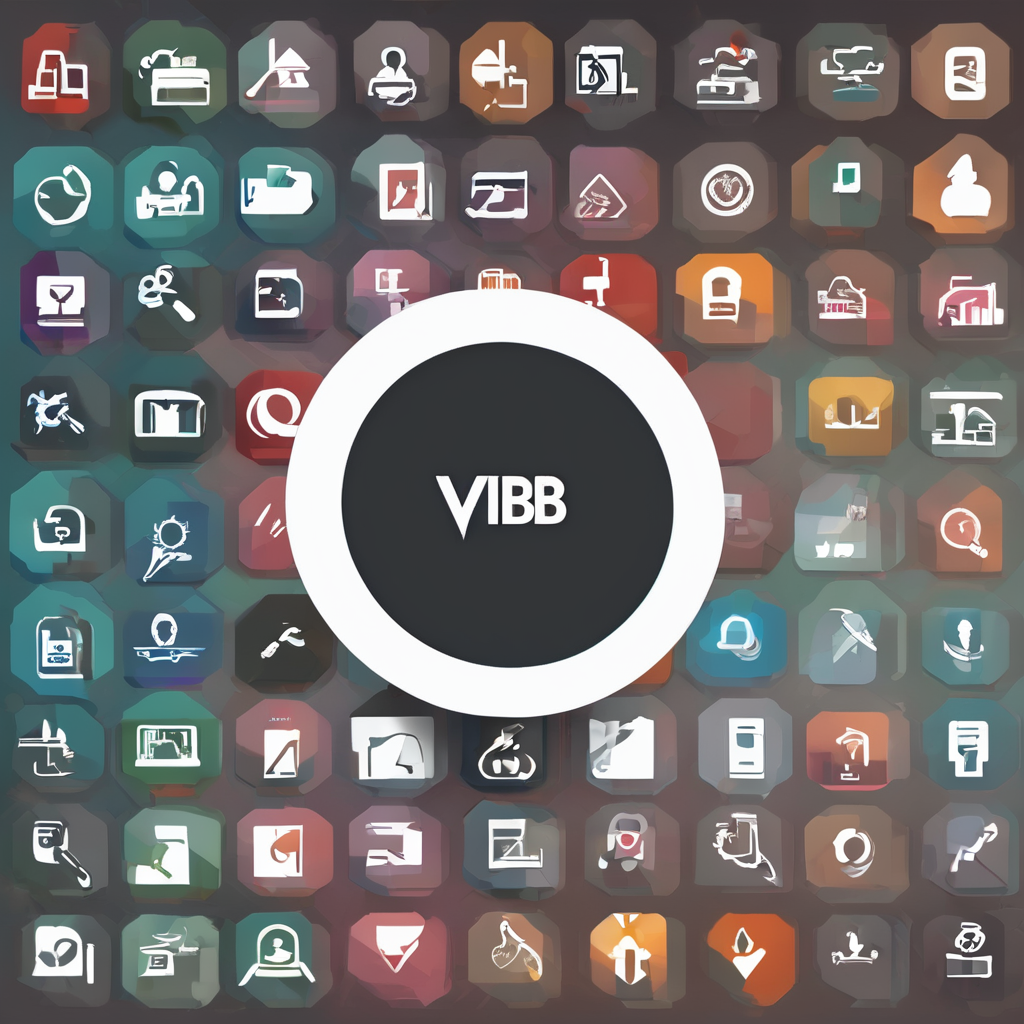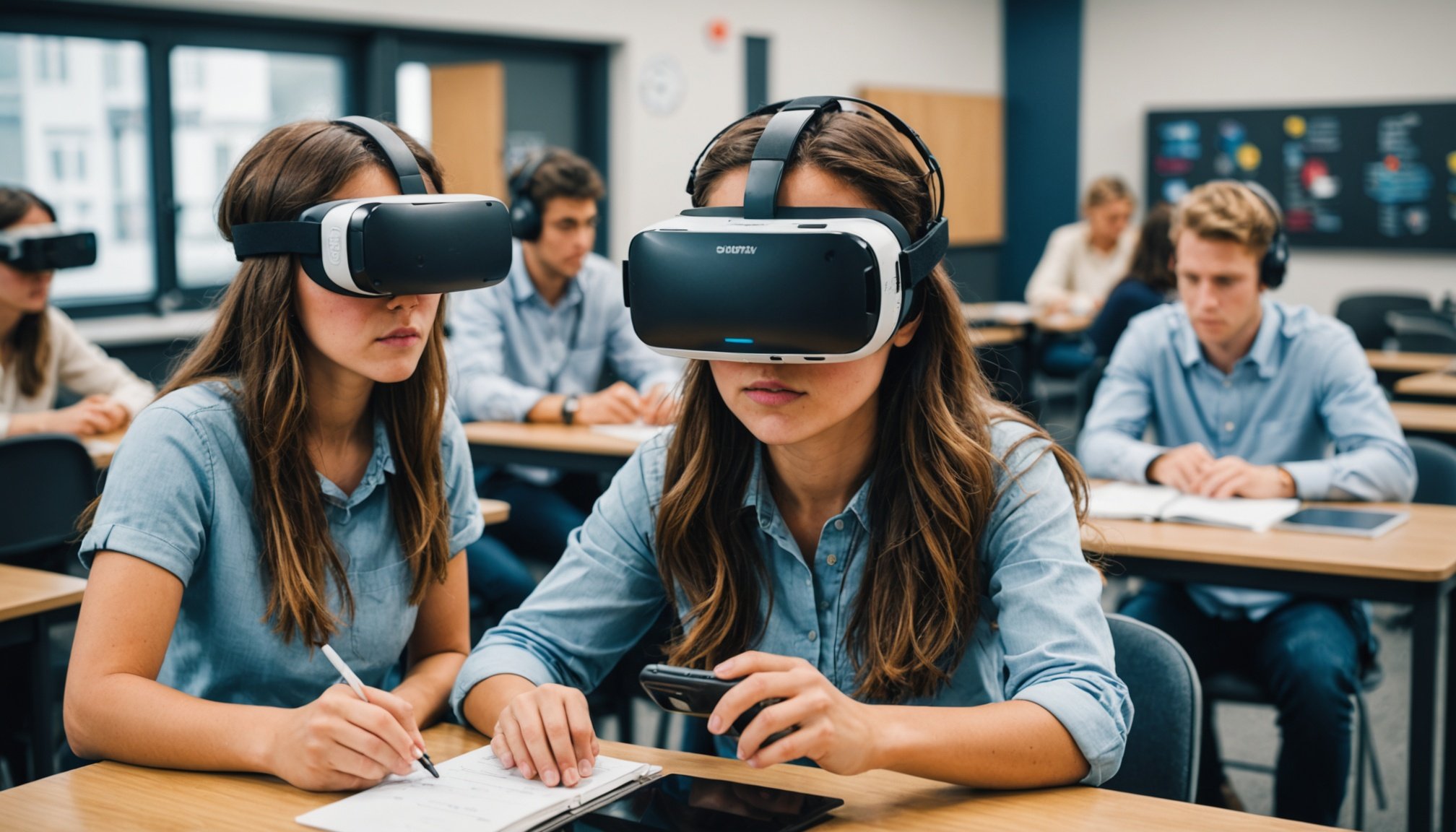Transforming Learning: Integrating AR/VR Technologies in UK Educational Institutions
The integration of Augmented Reality (AR) and Virtual Reality (VR) technologies into educational institutions in the UK is revolutionizing the way students learn, teachers teach, and institutions operate. These immersive technologies are not just supplementary tools but are increasingly becoming integral components of the educational landscape.
Enhancing Learning Experiences with Immersive Technologies
One of the most significant benefits of integrating AR and VR into education is the enhancement of learning experiences. These technologies allow students to engage with educational content in ways that were previously unimaginable.
Also to see : What are the most common funding challenges faced by UK entrepreneurs?
Immersive Learning in Higher Education
In higher education, VR is being used to bring complex subjects to life. For instance, civil engineering students can use VR to design buildings, history students can explore Roman ruins, and physics students can explore the universe. Arizona State University’s collaboration with Dreamscape to launch their Learn Lab is a prime example. Here, students learn biology through immersive VR experiences, including hand tracking and haptic feedback. The results have been impressive, with students who learned through VR showing dramatically higher lab grades and better engagement compared to their peers in conventional lab courses.
Augmented Reality in the Classroom
AR, on the other hand, is transforming traditional classroom training by making it more interactive and personalized. Marker-based AR apps can turn textbooks into interactive visual illustrations, making complex theoretical concepts more accessible and engaging. For example, Octagon Studio uses AR-based flashcards to provide students with an illustrative and engaging learning experience in subjects like history, biology, and art.
Also to see : Fun-filled bouncy castle hire in london for any celebration
Personalization and Accessibility
Another key advantage of AR and VR in education is their ability to offer personalized and accessible learning experiences.
Tailoring Education to Individual Needs
Online schools, which often incorporate VR and AR, offer a level of customization that traditional schools struggle to match. These schools can provide focused virtual classroom environments where students can engage with tailored content and receive individualized support from teachers. Dr. Penny Alston, Head of Primary School at King’s InterHigh, notes, “Our school eliminates the noise and visual distractions of a typical classroom, creating a more comfortable learning environment”.
Inclusive Learning for Special Educational Needs
AR and VR are particularly beneficial for students with special educational needs (SEN). These technologies create immersive virtual environments that mimic real-life social interactions, allowing students to practice and learn in a safe, judgment-free space. This approach not only engages students of all ages but also empowers them to explore and experiment without the fear of negative consequences.
Preparing Students for the Real World
AR and VR are also playing a crucial role in preparing students for the real world by providing them with practical, hands-on experiences.
Training for Real-World Scenarios
Universities are increasingly using VR to train students in real-world scenarios. For example, medical students at Queen Mary University London use VR to practice medical procedures before conducting them in real life. This approach is not only cost-effective but also ensures that students gain the necessary skills in a safe and controlled environment.
Mandatory Training and Soft Skills Development
VR is also being used to enhance soft skills, which are essential for employment. VirtualSpeech, a VR app, is used by universities worldwide to improve communication skills through realistic practice scenarios. This is particularly important as traditional online learning methods often fall short in providing the consistent, realistic practice needed to develop these skills.
Overcoming Challenges and Implementing Solutions
While the benefits of AR and VR in education are clear, there are also challenges to consider, particularly in terms of cost and infrastructure.
Cost and Infrastructure Challenges
One of the biggest challenges in integrating AR and VR on campuses is the cost. Schools and colleges need to invest in VR headsets, software, and the necessary IT infrastructure. To address this, models like the consortium pricing offered by Metaverse Learning can make the investment more accessible by allowing institutions to develop bespoke VR content at a fraction of the cost.
Practical Solutions for Implementation
To implement AR and VR effectively, educational institutions need to consider several factors:
- Investment in Technology: This includes VR headsets, AR devices, and the necessary software and IT infrastructure.
- Teacher Training: Teachers need to be trained to use these technologies effectively to integrate them into their teaching practices.
- Content Development: Developing high-quality, educational content that leverages the capabilities of AR and VR is crucial.
- Student Feedback: Regular feedback from students is essential to refine and improve the learning experiences provided by these technologies.
Real-World Examples and Success Stories
Several institutions in the UK are already seeing the benefits of integrating AR and VR into their educational programs.
Virtual Campus Tours and Interactive Learning
Metaverse Learning has developed VR campus tours that allow prospective students to explore campuses remotely. This not only helps in attracting international students but also provides a more immersive and attractive alternative to traditional campus visits. Additionally, institutions like the Immersive Learning Research Network (iLRN) have created virtual campuses that are open year-round for lectures, events, and networking.
Enhanced Student Engagement and Learning Outcomes
Studies have shown that students who use digital technologies, including AR and VR, tend to have better engagement and learning outcomes. For instance, 81% of students say that digital technology and online learning have helped them improve their grades. Moreover, online learners retain 25-60% more information than their peers in traditional settings.
Table: Comparing Traditional Learning with AR/VR Learning
| Aspect | Traditional Learning | AR/VR Learning |
|---|---|---|
| Engagement | Limited interactivity, often passive learning | Highly interactive, immersive experiences |
| Personalization | Standardized approach, limited flexibility | Tailored content, individualized support |
| Accessibility | Geographical limitations, physical classroom constraints | Accessible from anywhere, inclusive for SEN students |
| Real-World Application | Limited hands-on experience | Practical, real-world scenarios and training |
| Retention | Lower retention rates | Higher retention rates (25-60% more) |
| Cost-Effectiveness | High costs associated with physical infrastructure and resources | Cost-effective, especially with consortium pricing models |
| Teacher Training | Traditional teaching methods | Requires training to use AR/VR technologies effectively |
Practical Insights and Actionable Advice
For educational institutions considering the integration of AR and VR, here are some practical insights and actionable advice:
Start Small
Begin with pilot programs to test the effectiveness of AR and VR in specific subjects or courses. This will help in identifying the best practices and addressing any initial challenges.
Collaborate with Experts
Work with companies specializing in AR and VR education to develop bespoke content and training programs tailored to your institution’s needs.
Invest in Teacher Training
Ensure that teachers are adequately trained to use these technologies. This will help in seamless integration into the curriculum and maximize the benefits of AR and VR.
Gather Feedback
Regularly gather feedback from students and teachers to refine and improve the learning experiences provided by these technologies.
The integration of AR and VR technologies into UK educational institutions is a transformative step that enhances learning experiences, offers personalized education, and prepares students for the real world. While there are challenges to consider, the benefits far outweigh the costs. As technology continues to evolve, it is clear that AR and VR will play an increasingly important role in shaping the future of education.
In the words of Dr. Penny Alston, “We are a proper school, children attend proper lessons and sit in proper ‘classrooms’ — we just happen to be online.” This sentiment encapsulates the potential of AR and VR to redefine what a classroom looks like and how learning is delivered, making education more accessible, engaging, and effective for all students.











